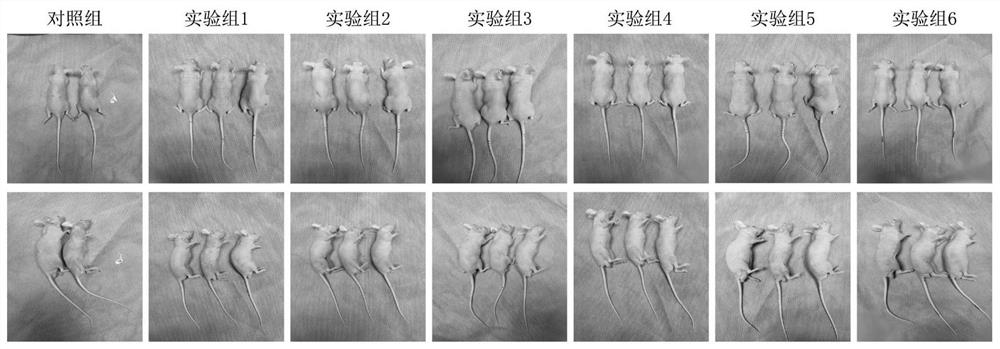Hair follicle microarray co-culture system and application in medicine for treating pathological alopecia
A pathological alopecia and co-cultivation technology, applied in the field of genetic engineering technology and biopharmaceuticals, can solve the problems of long time period and complicated operation of separation and culture
- Summary
- Abstract
- Description
- Claims
- Application Information
AI Technical Summary
Problems solved by technology
Method used
Image
Examples
Embodiment 1
[0057] Example 1 Hair follicle regeneration technology patient condition records
[0058] The patient, male, 31 years old, was admitted to the hospital due to "hair loss for many years". The hair loss grade was grade 7. Specialist conditions: the anterior hairline and bilateral frontal horns moved up significantly, and only the core area, central posterior area, and top-rotation area had villous hair growth. , the scalp is visible, the hair on the back of the occiput is sparse and soft, and the scalp is visible. Diagnosis: Androgenetic Alopecia
[0059] After treatment:
[0060] On November 25, 2019, the patient was admitted to the hospital at 08:00. The blood routine and four infectious diseases were routinely checked before the operation, and contraindications to the operation were excluded; the scalp was cleaned routinely. Entered the operating room at 08:20, performed autologous hair follicle extraction (FUE) under local anesthesia, and completed the operation at 08:50. ...
Embodiment 2
[0074] Patient Li Fan, male, 28 years old, was admitted to the hospital due to "hair loss for many years". The hair loss grade was grade 7. The condition of the specialist: the front hairline and the bilateral frontal horns moved up significantly, and only the central posterior area and the top rotation area had villous hair growth. The scalp is visible, the posterior occipital hair is sparse and soft, and the scalp is visible. Diagnosis: Androgenetic Alopecia
[0075] After treatment:
[0076] On October 17, 2019, he was admitted to the hospital at 13:30. The blood routine and four infectious diseases were routinely checked before surgery to rule out contraindications to surgery; the scalp was cleaned routinely. Enter the operating room at 14:00, perform autologous hair follicle extraction (FUE) under local anesthesia at 14:00, and complete the operation at 14:30, extract 91 single hair follicles and 23 double hair follicles and put them into the nutrient solution reagent bo...
Embodiment 3
[0091] The patient, 51 years old, was admitted to the hospital due to "hair loss for many years". Hair loss grade: female is sparse and moderate, specialist condition: bilateral frontal horns move upward obviously, a little hair growth is seen, and the scalp is visible. The hair in the core area, central area and top-spin area is sparse and soft as a whole, and the scalp is visible. The hair on the back of the occiput is sparse and soft, and the scalp is visible. Diagnosis: androgenetic alopecia.
[0092] After treatment:
[0093] On December 4, 2019, the patient was admitted to the hospital at 09:30. The blood routine and four infectious diseases were routinely checked before surgery to rule out surgical contraindications; a small area of the back of the occipital was routinely cut and the scalp was cleaned. Entered the operating room at 10:00, performed autologous hair follicle extraction (FUE) under local anesthesia, and completed the operation at 10:30. 61 single hai...
PUM
| Property | Measurement | Unit |
|---|---|---|
| height | aaaaa | aaaaa |
Abstract
Description
Claims
Application Information
 Login to View More
Login to View More - Generate Ideas
- Intellectual Property
- Life Sciences
- Materials
- Tech Scout
- Unparalleled Data Quality
- Higher Quality Content
- 60% Fewer Hallucinations
Browse by: Latest US Patents, China's latest patents, Technical Efficacy Thesaurus, Application Domain, Technology Topic, Popular Technical Reports.
© 2025 PatSnap. All rights reserved.Legal|Privacy policy|Modern Slavery Act Transparency Statement|Sitemap|About US| Contact US: help@patsnap.com



